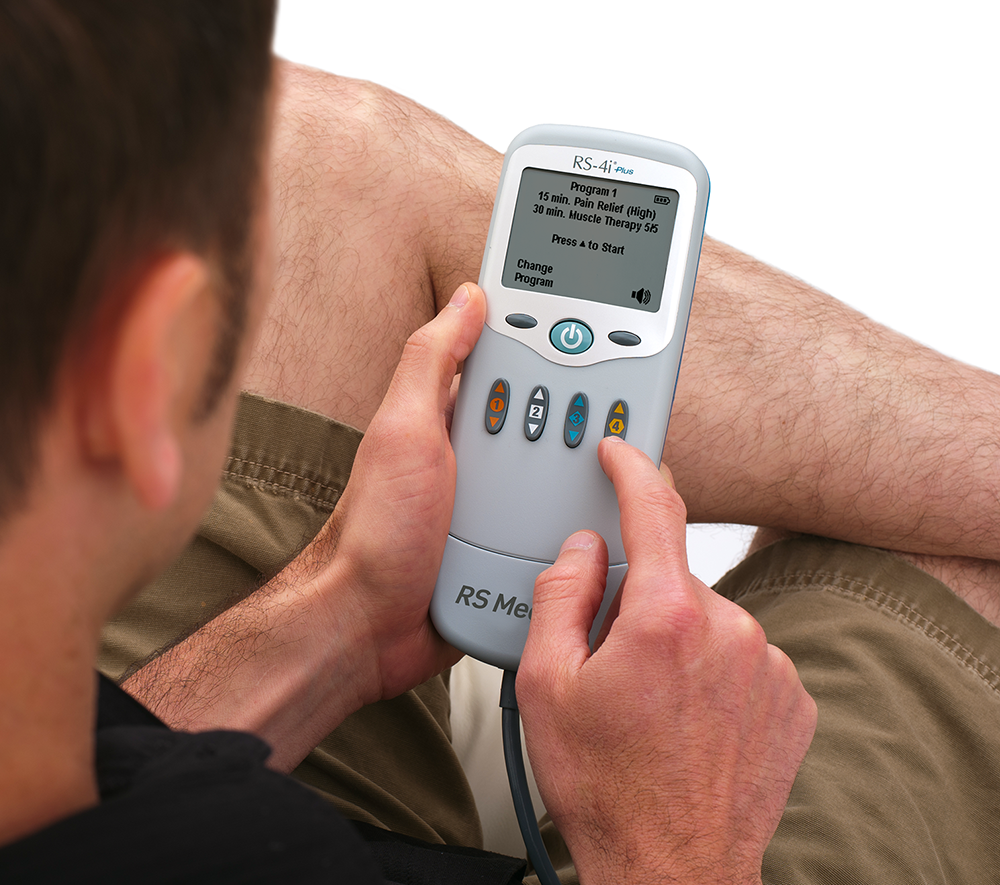This shift away from just treating the pain toward a model that treats the whole person is rooted in a growing trend called patient-centered care – what the VA calls Whole Health. While this change may seem strange at first, it offers patients more options and increased independence for managing chronic conditions. Treatments that can be self-managed – during the day or especially at night – allow patients to get the necessary pain relief in their actual moments of need.
Read MoreNot surprisingly, there’s a wide range of prices for TENS units, and those are influenced by the performance – that is, the sophistication of a device’s features and the variety of programs it offers. Prices range from under $100 to several thousand dollars, but picking the right device doesn’t have to be challenging with a bit of guidance about how to compare units.
Read MoreWorking as a carpenter and serving in the military left Kelly with joint pain and arthritis. Shortly after transitioning to civilian life, she was also diagnosed with stage four thyroid cancer. Treatment left her unable to turn her neck or tilt her head. Today, with the aid of an RS-4i Plus, she’s able to find relief and has regained some flexibility. She’s also been able to pursue a degree in yoga training.
Read MoreA key element to enjoying the benefits of pain relief and/or muscle rehab from an RS-4i Plus or other transcutaneous electrotherapy (TENS) device is having a supply of quality electrodes to use with it. Making sure to hold electrode pads lightly at the edge when applying them and keeping them on the storage liners between treatments are just two ways to get the most life out of your electrodes. Read on to learn more.
Read MoreWhile the notion of PTSD has been with us for generations, it’s gained prominence as a national health concern over the past two decades. Symptoms can vary widely, and often include anxiety, depression and agitation. Studies also show that pain is commonly reported in people suffering from PTSD. The good news, though, is that there can be real, life-changing benefits to combating chronic pain. Learn this and more lifestyle tips for coping.
Read MoreKnowing that all TENS units are different is a start to learning about transcutaneous electrotherapy. Taking a deeper dive into what makes them different reveals that there are varying therapeutic distinctions between devices, and these distinctions can be used to hone in on which device is the best for addressing a patient’s particular condition.
Read MoreAfter serving 23 years in the U.S. Army as an 11th Bravo Infantry Ranger, Matt was no stranger to physical challenges. Four major injuries left Matt with chronic pain and a need to find relief. Today, he continues to see a chiropractor, and he uses a service dog as well, but he credits the RS-4i Plus with helping him walk and exercise daily.
Read MoreIt’s hard to believe, but scientists say it actually is possible to experience more pain as a result of taking opioids – especially high doses over long periods. This is due to changes the drugs cause in the chemical signaling within the central nervous system – making the body generally more sensitive to painful stimuli. The resulting condition is called opioid-induced hyperalgesia (OIH).
Read MoreKnowing that all TENS units are different is a start to learning about transcutaneous electrotherapy. Each of the 5 signal types commonly offered by TENS units is “tuned” for a different purpose – for instance, causing a muscle to contract or preventing a nerve from transmitting pain signals. This presents a guide to understanding the therapeutic value of each signal and is the first step to determining the best device for the patient.
Read MoreConstant pain from the middle of her back down her left leg to her toes took a serious toll on Kate’s health. Luckily, she was able to get her independence back after she added the RS-4i Plus to her treatments. She takes one pill twice daily to help with the pain, in addition to using the RS-4i Plus. She can now do many of the things she couldn’t do before – like driving.
Read MoreThe Gate Control Theory of Pain says that pain sensations are involved in an intricate series of communications between the central nervous system and peripheral nervous system. Sitting in between are a series of “gates” that can either transmit or block pain signals. Science has shown that hyper-stimulating certain nerve fibers can help close these gates, and therapies such as massage, acupuncture and electrotherapy are all thought to be effective ways of temporarily inhibiting pain signals.
Read MorePatients are learning to play a more proactive role in their own rehabilitation and, in the process, some are discovering an extra ally in the fight against pain. This natural aide comes in the form of tiny molecules that help boost the body’s ability to block pain signals. If this sounds too good to be true, it isn’t. There’s real science behind endorphins – the body’s natural painkillers.
Read More












